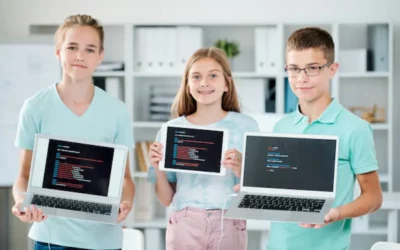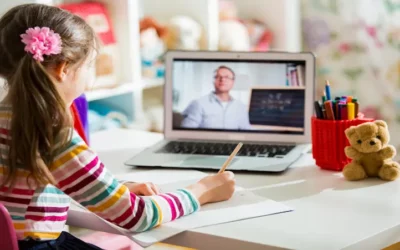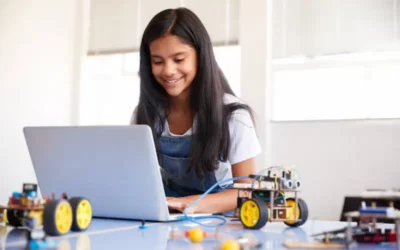Coding is a valuable skill that can open up a world of possibilities for your kids. It can help them develop critical thinking, problem-solving, and creativity skills. It can also prepare them for a variety of in-demand careers in the tech industry.
If you’re interested in teaching your kids coding, there are a few things you can do to get started.
Table of contents
Introduction to Learning Coding for Kids

Coding is the process of creating instructions for a computer to follow. It is a valuable skill for kids to learn, as it can help them develop problem-solving, creativity skills and critical thinking skills for kids. Coding can also be used to create games, apps, and other digital products.
There are many different ways to learn coding for kids. There are online courses, books, and even coding camps. It is important to find a method that works best for your child.
Once your child has learned the basics of coding, they can start to create their own projects. This is a great way to encourage their creativity and problem-solving skills.
The Importance of Learning Coding for Kids
There are many reasons why it is important for kids to learn coding. Here are a few of the benefits:
- Problem-solving skills: Coding requires kids to think logically and solve problems. This is a valuable skill that can be used in many different areas of life.
- Critical thinking skills: Coding requires kids to think critically about how to solve problems. This is a skill that is essential for success in school and in the workplace.
- Creativity: Coding can be a very creative outlet for kids. They can use their imagination to create their own games, apps, and other digital products.
- Career opportunities: The demand for coding skills is growing rapidly. By learning to code, kids can give themselves a head start on a successful career in technology.
If you are interested in teaching your child how to code, there are many resources available to help you get started. With a little effort, you can help your child develop the skills they need to succeed in the 21st century.
Choosing the Right Approach to Learning Coding for Kids

Choosing the right approach to learning coding for kids is crucial to ensure a solid foundation and foster a lifelong passion for technology. With numerous options available, parents and educators must consider several factors to determine the most suitable approach for their young learners.
Firstly, it is essential to consider the age and developmental stage of the child. Younger children may benefit from hands-on, interactive approaches that incorporate code games for kids, puzzles, and visual programming languages. These approaches help cultivate problem-solving skills and creativity while making learning enjoyable and engaging. As children progress in age and ability, they can transition to more advanced programming languages and concepts.
Secondly, the learning environment plays a significant role. Some kids thrive in a structured classroom setting, while others prefer self-paced online platforms. Traditional classrooms provide the advantage of in-person instruction, collaboration with peers, and immediate feedback from teachers. On the other hand, online platforms offer flexibility, personalized learning paths, and access to a vast range of resources. It is important to assess the child’s learning style and preferences to select an environment that maximizes their potential.
Additionally, the curriculum and teaching methodology should align with the child’s interests and goals. Coding encompasses various domains, such as game coding for kids, web design, robotics, and mobile applications. Identifying the child’s specific areas of interest can guide the selection of an appropriate curriculum and approach. For example, if a child is interested in game development, a program that focuses on building games using popular game engines may be ideal.
Lastly, ongoing support and mentorship are vital for a child’s coding journey. Look for programs for kids or resources that offer guidance from experienced instructors, opportunities for collaboration with peers, and a supportive community. Mentorship programs and coding clubs can provide additional avenues for growth and inspiration.
Different approaches to teaching coding for kids
There are many different approaches to teaching coding for kids. Some of the most popular approaches include:
- Online courses: There are a number of online courses available that teach kids how to code. These courses can be a great option for kids who want to learn at their own pace and on their own time. Some popular online coding courses for kids include Code.org, Khan Academy, and Scratch.
- Coding camps: Coding camps are a great option for kids who want to learn coding in a more immersive environment. Coding camps typically offer a variety of activities and projects that allow kids to apply what they are learning. Some popular coding camps for kids include iD Tech Camps, Code Ninjas, and Tech Camps.
- Coding toys: There are a number of coding toys available that can help kids learn the basics of coding. These toys can be a great way for kids to learn coding in a fun and engaging way. Some popular coding toys for kids include Dash and Dot, Sphero, and Ozobot.
- Coding books: There are a number of coding books available that can help kids learn how to code. These books can be a great option for kids who prefer to learn by reading. Some popular coding books for kids include “ScratchJr: First Coding Adventures” by Mitchel Resnick and “Python for Kids: A Playful Introduction to Coding” by Bill Dudney.
The best approach to teaching coding for kids will vary depending on the individual child’s learning style and interests. It is important to find an approach that is engaging and fun for the child, and that will help them learn the basics of coding in a way that is easy to understand.
In addition to the approaches listed above, there are many other ways to teach coding for kids. Some parents choose to teach their children coding at home, while others enroll their children in after-school coding programs. There are also a number of libraries and community centers that offer coding classes for kids. coding classes can be found easily by searching “coding class for kids near me“
No matter which approach you choose, the most important thing is to make sure that your child is having fun and that they are learning. Coding can be a great way for kids to develop problem-solving skills, creativity, and critical thinking skills. It can also help them prepare for a future in STEM fields.
Factors to consider when selecting the right approach for your child
There are many factors to consider when selecting the right approach for your child. Some of the most important factors include:
- Your child’s age and developmental stage. What works for a toddler may not work for a school-aged child. It’s important to choose an approach that is appropriate for your child’s age and developmental stage.
- Your child’s learning style. Some children learn best by listening, while others learn best by doing. It’s important to choose an approach that is tailored to your child’s learning style.
- Your child’s interests. If your child is interested in a particular topic, they are more likely to be engaged in learning. Choose an approach that incorporates your child’s interests.
- Your own parenting style. Some parents prefer a more structured approach, while others prefer a more relaxed approach. Choose an approach that is comfortable for you and that you can stick with over time.
In addition to these factors, it’s also important to consider the following:
- The resources available to you. Some approaches require more resources than others. For example, if you want to use a Montessori approach, you will need to find a Montessori school or purchase Montessori materials.
- Your child’s needs. If your child has special needs, you will need to choose an approach that is tailored to their needs. For example, if your child has autism, you may want to choose an approach that uses Applied Behavior Analysis (ABA).
It’s important to remember that there is no one-size-fits-all approach to parenting. The best approach is the one that works best for your child and your family. If you are not sure which approach is right for your child, talk to your child’s doctor or a child development specialist.
Here are some additional tips for selecting the right approach for your child:
- Do your research. There are many different parenting approaches available. Take some time to research different approaches and find one that you think would be a good fit for your child.
- Talk to other parents. Talk to other parents who have children of similar ages. They may be able to give you some helpful insights into different parenting approaches.
- Trust your gut. Ultimately, the best way to choose the right approach for your child is to trust your gut. What feels right for you and your family?
Programming Languages for Kids
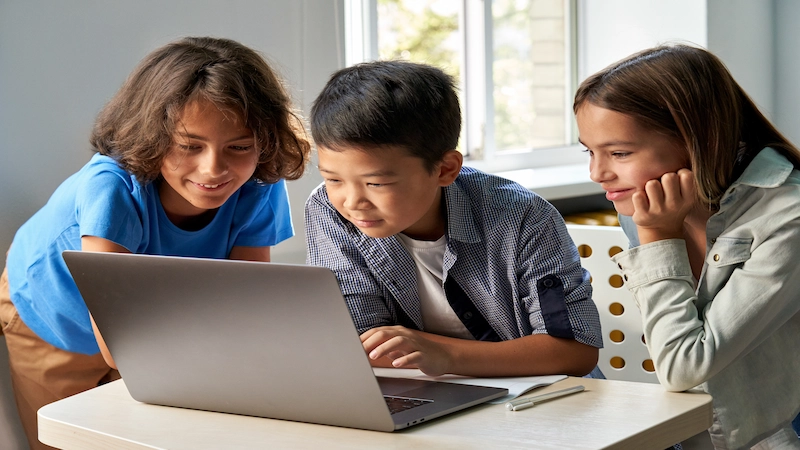
There are many programming languages that are good for kids to learn. Some of the most popular options include:
- Scratch: Scratch coding for kids is a block-based programming language that is designed to be easy for kids to learn. It is a great way to introduce kids to the basics of programming, such as loops, conditionals, and variables.
- Python: Python for kids is a general-purpose programming language that is known for its simplicity and readability. It is a good choice for kids who are ready to move on from block-based programming and learn a more traditional language.
- Java: Java is a powerful programming language that is used to create a wide variety of applications. It can be a bit more challenging to learn than Python, but it is a valuable skill for kids to have.
- C++: C++ is a powerful and versatile programming language that is used to create a wide variety of applications. It is a good choice for kids who are interested in learning about low-level programming.
- JavaScript: JavaScript is a scripting language that is used to add interactivity to web pages. It is a good choice for kids who are interested in web development.
- Blocky: Blockly is a visual programming language that makes it easy for kids to learn how to code. It’s a great way to introduce kids to the basics of programming, without having to worry about syntax or complex commands.
Tips for Teaching Coding to Kids
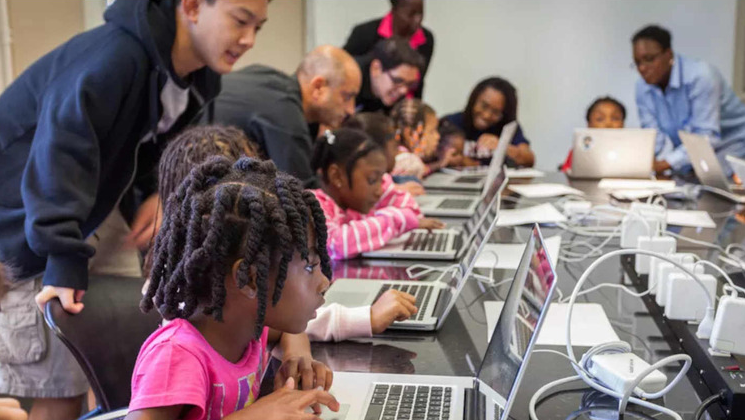
Coding is a valuable skill for kids to learn, and it can be fun too! Here are some tips for teaching coding to kids:
- Start with the basics. Don’t try to teach kids everything about coding all at once. Start with the basics, such as variables, loops, and functions. Once they have a good understanding of the basics, you can start teaching them more advanced concepts.
- Make it fun. Coding doesn’t have to be boring. There are many fun and engaging ways to teach kids how to code. You can use games, puzzles, and other activities to make learning fun.
- Be patient. Learning to code takes time and practice. Don’t get discouraged if your kids don’t get it right away. Just keep practicing and they’ll eventually get the hang of it.
- Make it relevant. Try to relate coding to things that kids are interested in. For example, if your kid likes playing video games, you could teach them how to make their own games.
- Use online resources. There are many great online resources that can help you teach coding to kids. Some of these resources include:
- CodeChamps by BrightChamps is a great learning platform that ignites young minds with the power of coding. It is a creative wonderland where kids dive into the captivating world of programming, learning to unravel complex algorithms and craft their own digital masterpieces.
- Scratch: Scratch is a free, online coding platform that is perfect for kids of all ages.
- Code.org: Code.org is a non-profit organization that provides free coding resources for kids.
- Khan Academy: Khan Academy offers free coding tutorials for kids of all ages.
With a little patience and effort, you can teach your kids how to code. Coding is a valuable skill that can open up a world of possibilities for them.
Here are some additional tips for teaching coding to kids:
- Make it real-world. When you’re teaching coding, try to relate it to things that kids are interested in. For example, if your kid is interested in animals, you could teach them how to code a game where they can take care of a virtual pet.
- Encourage creativity. Coding is a creative activity, so encourage kids to experiment and try new things. Don’t be afraid to let them make mistakes. Mistakes are a natural part of the learning process.
- Celebrate successes. When kids make progress, be sure to celebrate their successes. This will help them stay motivated and excited about learning.
Coding can be a fun and rewarding experience for kids. With a little guidance, they can learn how to create amazing things.
Coding Projects for Kids
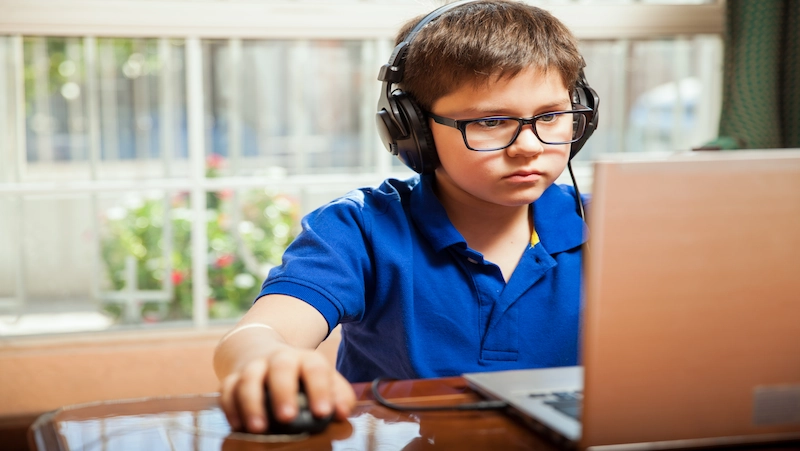
Coding is a valuable skill for kids to learn, and there are many fun and engaging coding projects that they can do. Here are a few ideas:
- Make a video game. There are many different ways to make a video game, and there are plenty of resources available online to help kids get started. One popular option is to use the Scratch programming language, which is designed specifically for kids.
- Build a robot. There are many different kits available that allow kids to build their own robots. Once they have built their robot, they can program it to do all sorts of things, such as follow a line, avoid obstacles, or even play games.
- Create a website. Kids can use a variety of tools to create their own websites. One popular option is to use the Wix website maker for kids, which is easy to use and has a variety of templates and features to choose from.
- Develop a mobile app. There are many different ways for kids to develop their own mobile apps. One popular option is to use the AppInventor platform, which allows kids to create apps using a drag-and-drop interface.
- Design a logo. Kids can use a variety of tools to design their own logos. One popular option is to use the Canva design platform, which has a variety of templates and features to choose from.
These are just a few of the many coding projects that kids can do. With a little creativity and effort, kids can learn to code and create all sorts of amazing things.
Resources for Parents and Educators
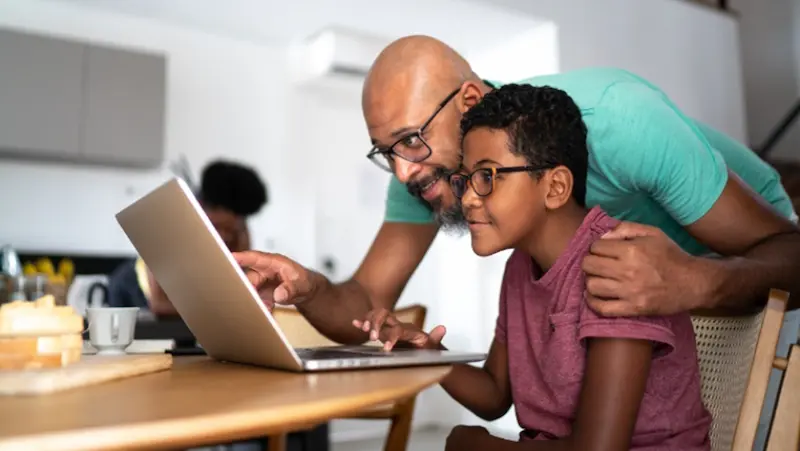
There are many resources available for parents and educators who want to teach coding to kids. Here are a few of the best:
Books
There are many great books available that teach coding to kids. Some of our favorites include:
- ScratchJr: This book is a great introduction to coding for young children. It uses the ScratchJr programming language, which is designed for kids ages 5-7.
- Python for Kids: This book is a great introduction to the Python programming language for kids ages 7-12. It covers the basics of Python, such as variables, loops, and functions.
- JavaScript for Kids: This book is a great introduction to the JavaScript programming language for kids ages 8-14. It covers the basics of JavaScript, such as variables, objects, and functions.
Websites
There are also many great websites that offer coding resources for kids. Some of our favorites include:
- BrightChamps provides a fun and interactive platform for kids to learn coding concepts. With a range of age-appropriate courses, kids can progress at their own pace and develop their coding skills through engaging activities and projects. The platform also encourages creativity and problem-solving, helping kids to develop critical thinking skills that are valuable not just in coding but in many areas of life. BrightChamps is a great way for kids to get started in the world of coding and set themselves up for success in the future.
- Codecademy: Codecademy offers a variety of coding courses for kids, including courses on HTML, CSS, JavaScript, and Python.
- Khan Academy: Khan Academy offers a free coding course for kids called “Introduction to Computer Science.”
- Tynker: Tynker offers a variety of coding courses for kids, including courses on Minecraft, Roblox, and Lego.
Other Resources
There are also many other resources available for parents and educators who want to teach coding to kids. Some of these resources include:
- Coding camps: There are many coding camps available for kids of all ages. These camps can be a great way for kids to learn coding in a fun and immersive environment.
- Coding clubs: There are also many coding clubs available for kids. These clubs are a great way for kids to learn coding from other kids and to get support from experienced mentors.
- Coding tutorials: There are many coding tutorials available online. These tutorials can be a great way for kids to learn coding at their own pace.
Teaching coding to kids can be a great way to help them develop problem-solving skills, creativity, and critical thinking skills, benefiting children programming. It can also help them prepare for future careers in technology. With so many resources available, there is no excuse not to teach coding to kids.
Conclusion
In conclusion, teaching your kids coding is a great way to help them develop problem-solving skills, creativity, and critical thinking. It can also help them prepare for future careers in technology. There are many different ways to teach your kids coding, and the best approach will vary depending on their age and interests. However, some general tips include:
- Start with the basics. There are many different coding languages, but they all share some basic concepts. Start by teaching your kids about variables, loops, and functions.
- Make it fun. Coding can be a lot of fun, but it can also be challenging. Make sure to keep things interesting by using games and activities.
- Be patient. It takes time to learn to code. Don’t get discouraged if your kids don’t get it right away. Just keep practicing and they’ll eventually get the hang of it.
If you’re interested in teaching your kids coding, there are many resources available to help you get started. There are books, websites, and even coding clubs that can provide you with the information and support you need. So what are you waiting for? Start teaching your kids coding today!
Frequently Asked Questions
Coding helps kids develop problem-solving, critical thinking, and creativity skills. It also prepares them for the future workforce, which is increasingly reliant on technology.
Kids can start learning coding as early as preschool. There are many coding programs and apps available for young children.
Some popular coding languages for kids to learn include Scratch, Python, and Java.
There are many ways to help your child get interested in coding. You can start by exposing them to best coding games for kids and apps. You can also encourage them to create their own projects.
Yes, there are many coding classes and camps available for kids. These classes can be a great way for kids to learn coding from experienced instructors.
Coding helps kids develop problem-solving skills by teaching them how to break down problems into smaller, more manageable steps. It also teaches them how to test and debug their code, which helps them develop critical thinking skills.
Yes, there are many free resources available for kids to learn coding. Some popular free resources include Code.org, Scratch, and Python Turtle.
Some fun coding projects for kids to work on include creating games, apps, and websites. Kids can also use coding to create art, music, and animations.
There are many ways to support your child’s coding education at home. You can start by providing them with a computer and access to the internet. You can also encourage them to read books and articles about coding. You can also help them finding programming classes for kids and camps.

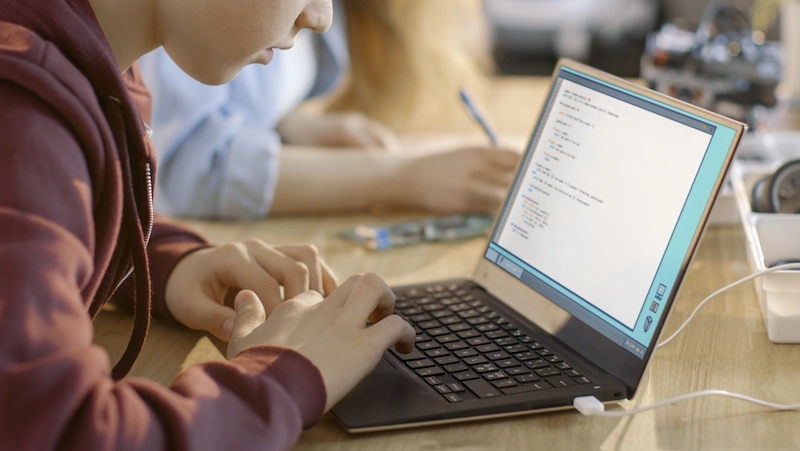
 We are an army of educators and passionate learners from BrightChamps family, committed to providing free learning resources to kids, parents & students.
We are an army of educators and passionate learners from BrightChamps family, committed to providing free learning resources to kids, parents & students.



